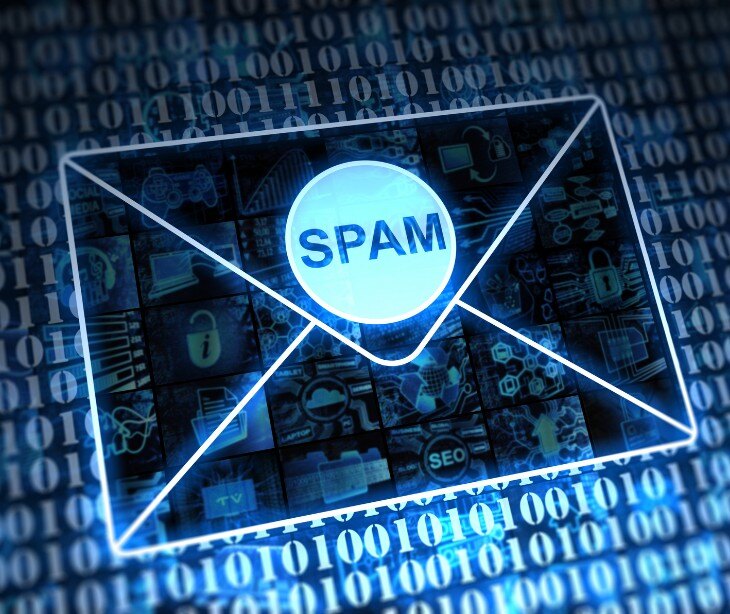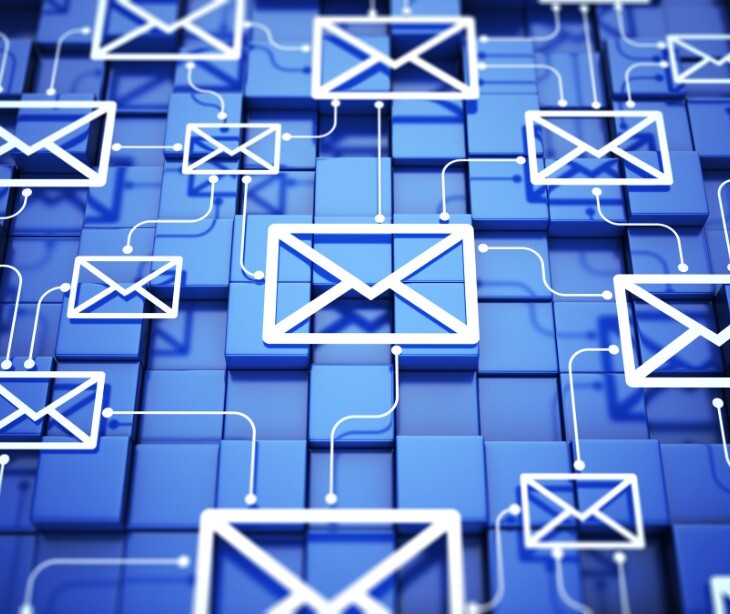
Spam filtering is the process of identifying and blocking unwanted emails from reaching a user’s inbox. Effective spam filters help ensure that only legitimate emails are delivered, improving productivity and protecting users from potential threats. Spam filters use various techniques to analyze incoming messages and determine their legitimacy.
What is spam?
In 2022, the number of daily emails sent was recorded to be 333 billion, of which a staggering 49% were spam. This accounts for approximately 162 billion unsolicited messages being sent every day. So what is spam?
Spam is unwanted, and unsolicited emails are often sent in bulk. These messages can range from harmless advertisements to dangerous phishing attempts designed to steal personal information. Spam emails can overwhelm inboxes, making it difficult for users to find important messages. Additionally, they can be a vector for malware, putting users' data and privacy at risk.
How does spam filtering work?
Spam filtering works through a multi-layered approach that combines various techniques to identify and block unwanted emails before they reach the recipient’s inbox. The effectiveness of spam filters relies on their ability to analyze different aspects of an email, from the sender's information to the content and technical characteristics.
See also: What is an email filter?
Steps in the spam filtering process
- Email reception: When an email is received by the email server, the spam filter immediately begins its analysis. This can occur at various points in the email delivery process, such as at the email gateway, on the mail server, or within the email client.
- Header analysis: The filter examines the email headers for information about the sender, routing, and authentication.
- Content analysis: The body of the email is scanned for keywords, phrases, and patterns indicative of spam. This may include checking for suspicious links, unusual formatting, and the presence of known spam-related phrases.
- URL and link analysis: The filter inspects any links within the email to determine if they point to known malicious or phishing websites. This can involve checking the URLs against databases of malicious sites.
- Attachment scanning: Any attachments included with the email are scanned for malware or other malicious content. This is crucial for identifying and blocking emails with harmful payloads.
- Machine learning evaluation: Advanced filters will use machine learning algorithms to evaluate the email based on patterns learned from previously processed emails. This step allows the filter to adapt to new and evolving spam techniques.
- Decision-making: Based on the combined analysis from the previous steps, the spam filter assigns a spam score to the email. If the score exceeds a certain threshold, the email is marked as spam. The exact threshold can vary and may be adjustable by the user or administrator.
- Action taken: If an email is identified as spam, the filter will take the appropriate action, such as moving the email to the spam or junk folder, quarantining the email for further review, blocking the email, or preventing it from reaching the recipient’s inbox.
Types of spam filtering
Several types of spam filtering techniques are used to identify and block unwanted messages. These methods can be broadly categorized based on their approach to analyzing and filtering email content:
Content-based filtering
Content-based filtering analyzes the actual content of an email to identify spam characteristics. This can involve several techniques:
- Keyword filtering: Scans the email for specific words or phrases commonly associated with spam (e.g., "free," "winner," "guaranteed").
- Heuristic filtering: Uses rule-based algorithms to detect patterns and anomalies in the email content that are typical of spam, such as excessive use of capital letters, punctuation, or suspicious links.
- Bayesian filtering: Use statistical methods to classify emails based on the probability that they are spam. This involves training the filter on a large dataset of both spam and legitimate emails, allowing it to recognize patterns and make probabilistic assessments for new emails.
- Image filtering: Since spammers often use images to bypass text-based filters, advanced content filters can analyze images for embedded text or other signs of spam.
Header filtering
Header filtering examines the metadata in the email header, which contains information about the sender, the path the email took to reach the recipient, and various technical details. This includes:
- Sender analysis: Verifying the legitimacy of the sender's email address and domain.
- Routing information: Checking the path the email took to reach the recipient to identify suspicious routing that might indicate spam.
- Authentication checks: Use protocols like Sender Policy Framework (SPF), DomainKeys Identified Mail (DKIM), and Domain-based Message Authentication, Reporting & Conformance (DMARC) to verify that the email is sent from a legitimate source.
Blacklist and whitelist filtering
- Blacklist filtering: Uses lists of known spam sources, such as IP addresses, domains, or email addresses. If an incoming email originates from a blacklisted source, it is automatically marked as spam.
- Whitelist filtering: Employs lists of approved senders. Emails from these sources are always allowed through, ensuring that legitimate emails are not mistakenly marked as spam.
Rule-based filtering
Rule-based filtering relies on predefined rules and policies to determine if an email is spam. These rules can be based on various factors, such as:
- Content rules: Specific words or patterns in the email body.
- Sender rules: Whether the sender's address or domain matches a known spam source.
- Behavioral rules: Characteristics like the frequency of emails from a sender or the number of recipients on an email.
Machine learning and artificial intelligence filtering
Machine learning (ML) and artificial intelligence (AI) based filtering involve training models on large datasets of emails to identify patterns and characteristics associated with spam. These models can:
- Learn and adapt: Continuously learn from new emails and user feedback to improve their accuracy.
- Detect sophisticated spam: Identify complex patterns and evolving tactics used by spammers, such as phishing attempts or personalized spam.
Behavioral filtering
Behavioral filtering analyzes the behavior and interaction patterns of email senders and recipients. It considers factors such as:
- Sending frequency: High-frequency sending from a single source may indicate spam.
- Recipient interaction: Low interaction rates (e.g., few opens or clicks) with emails from a particular sender can suggest that the sender is spamming.
Collaborative filtering
Collaborative filtering leverages data and insights from a large community of users or multiple organizations. It involves:
- Crowdsourced spam identification: Using reports and feedback from a wide user base to identify and block spam.
- Shared blacklists/whitelists: Organizations can share their blacklists and whitelists to enhance the effectiveness of their spam filters.
Challenge-response filtering
Challenge-response filtering is a more interactive method, where the filter sends a challenge back to the sender of an email, requiring a specific action (like solving a CAPTCHA) to verify that the sender is a legitimate human and not an automated spam bot. This can be effective, but it might also inconvenience legitimate senders.
Graylisting
Graylisting temporarily rejects emails from unknown senders, asking them to resend the email after a short delay. Since most spammers do not attempt to resend emails, this method can filter out a significant amount of spam. Legitimate mail servers, however, will usually attempt to resend, allowing the email through after the delay.
Real-time blackhole lists (RBLs)
RBLs are dynamic blacklists that are updated in real-time to include IP addresses known to send spam. These lists are used by spam filters to block emails from these addresses immediately upon detection.
Tips and best practices
Implementing effective spam filtering is crucial for maintaining secure and efficient email communication. Here are some tips and best practices for optimizing spam filters:
- Multi-layered approach: Combine various filtering techniques like content-based, header analysis, blacklists, whitelists, and machine learning.
- Regular updates: Keep spam filters updated to detect new types of spam.
- Email authentication protocols: Implement SPF, DKIM, and DMARC to verify sender legitimacy.
- Monitor spam reports: Regularly review spam reports to adjust filters and identify trends.
- Customize rules: Tailor filtering rules to specific needs and environments.
- Manage blacklists and whitelists: Keep these lists updated and accurate.
- User education: Train users to recognize and report suspicious emails.
- Implement greylisting: Temporarily reject emails from unknown senders to filter out automated spam.
- Leverage machine learning and AI: Use advanced technologies for better accuracy.
- Policy reviews: Regularly review and update email filtering policies.
- Integrate with other security measures: Combine spam filters with other security tools.
- Test and validate filters: Regularly test and validate spam filters to ensure effectiveness.
- Consider cloud-based solutions: Consider using cloud-based spam filtering for automatic updates and scalability.
- Implement quarantine and review mechanisms: Use quarantine areas for suspected spam to reduce false positives.
- Use real-time blackhole lists: Utilize RBLs for real-time updates on known spam sources.
See also: HIPAA Compliant Email: The Definitive Guide
FAQs
Is spam filtering effective in preventing email cyberattacks?
Spam filtering is an effective tool for preventing email cyberattacks by blocking many malicious and unsolicited emails. However, it is not foolproof and should be part of a broader, multi-layered security strategy.
What cyberattacks can spam filtering prevent?
Spam filtering can prevent various types of cyberattacks, including phishing attacks, malware distribution, business email compromise (BEC), spoofing, social engineering, and credential harvesting, among others.
See also: Email cyber threats 101: Types and tactics
Can spam filtering be bypassed by cybercriminals?
While spam filtering is an effective deterrent against many types of cyberattacks, cybercriminals may employ tactics to evade detection, such as using social engineering techniques, spoofing legitimate email addresses, or exploiting zero-day vulnerabilities. Regular updates, user training, and a multi-layered security approach can help mitigate these risks.
Subscribe to Paubox Weekly
Every Friday we'll bring you the most important news from Paubox. Our aim is to make you smarter, faster.




